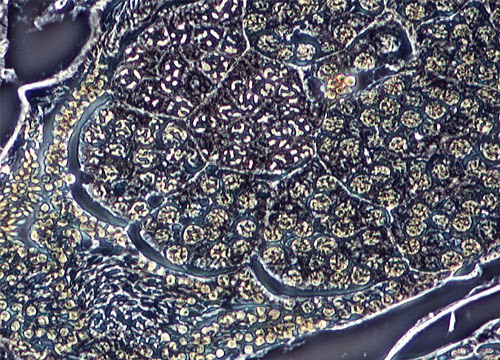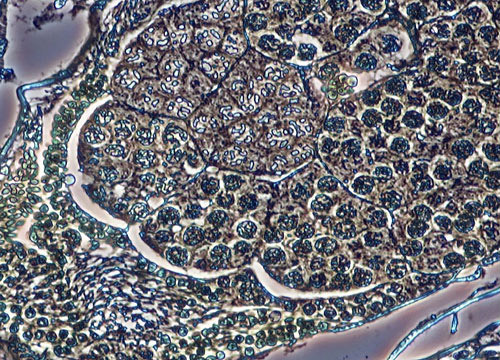Meiosis in Grasshopper Testes
Members of the order Orthoptera, grasshoppers are well known for their amazing jumping ability. Despite their small size, grasshoppers can cause a tremendous amount of damage if present in large numbers. They are capable of destroying entire crops of alfalfa, clover, cotton, corn and other grains, resulting in millions of dollars in crop damage every year.
 Negative
Negative
 Positive
Positive
Positive
Grasshoppers are widespread and can be found in most habitats except for the colder regions near the North and South poles. Rather than jumping, most species have two pairs of wings that help them get from place to place in search of food. Although some grasshoppers are general herbivores that will eat a wide variety of plants, others are finicky consumers. They demonstrate strong preferences and sometimes pass many edible and nutritionally sound plants in search of something they simply like better.
Negative
Grasshoppers are strong insects with a well-protected body and sight that enables them to identify predators from afar. Some of their most common predators are beetles, birds, mice, snakes, and spiders. Yet, certain varieties of flies that spawn on or near grasshopper eggs are, perhaps, their most unusual predator. After the fly eggs hatch, the newborn flies eat the grasshopper eggs first, soon followed by the adult grasshopper. Nevertheless, humans represent the greatest threat to grasshoppers due to pesticide use and urbanization. In a small way, grasshoppers often fight back. Many species will spit a brown bitter liquid, commonly referred to as “tobacco juice,” when handled by humans.















